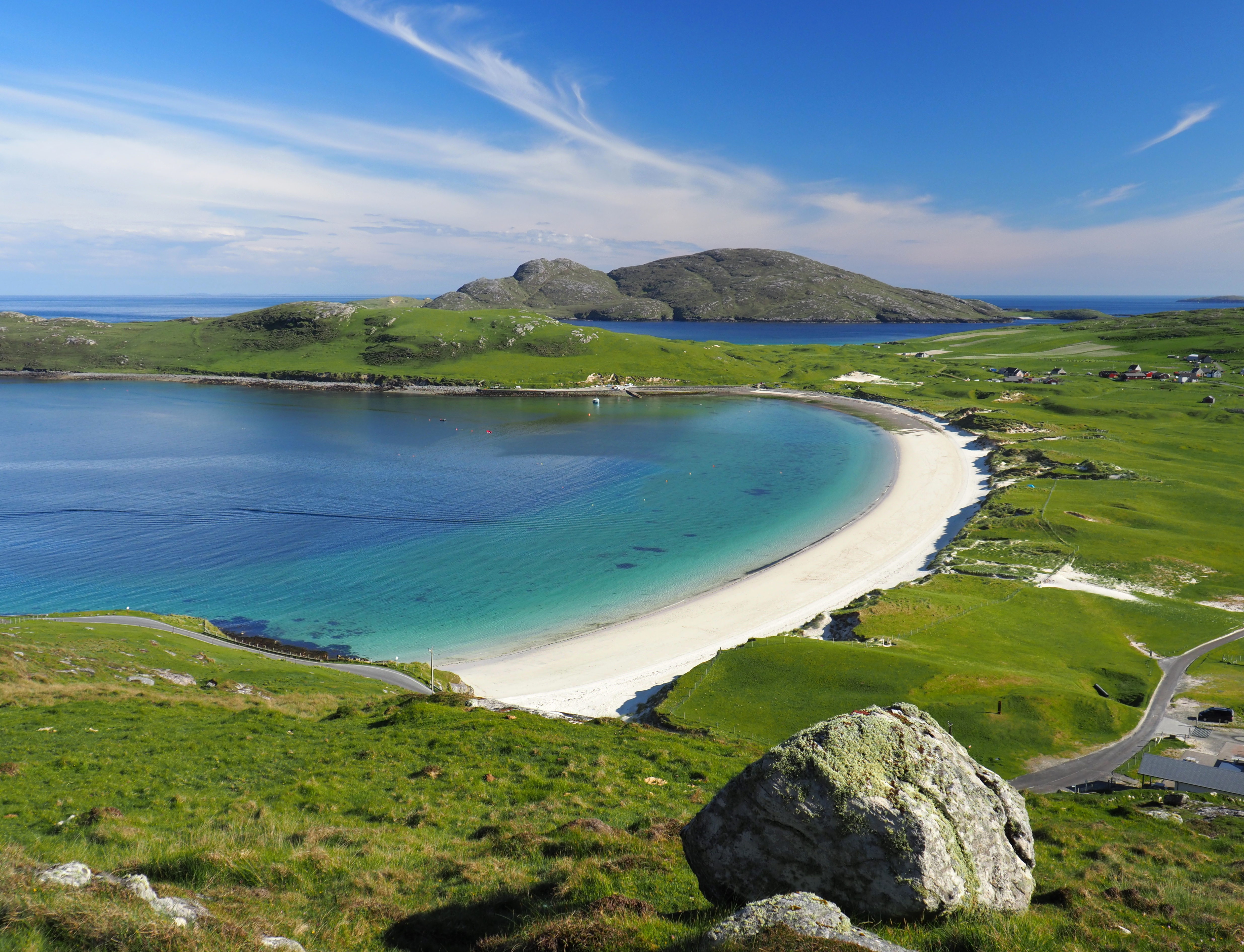Projects based in Yorkshire, Outer Hebrides and Merseyside have received a share of £2.4 million from the Natural Environment Research Council (NERC), part of UK Research and Innovation.
The studies are the first NERC research projects to be co-led by local community members and scientists from beginning to end.
Reducing coastal erosion
A project led Glasgow Caledonian University and island communities in Scotland’s Outer Hebrides will investigate the most effective ways to reduce coastal erosion.
The research group will use sustainable and natural approaches to conserving the coastlines of Barra and Vatersay.
The islands are significantly affected by erosion, particularly along the sand dunes and beaches due to exposure to the storms and rising sea levels of the Atlantic Ocean. The coastal erosion threatens businesses, homes and landmarks.
The four-year project, Muir is Tir (Land and Sea) – Adapting to Coastal Change on Barra and Vatersay, focuses on tackling coastal erosion while promoting environmental and community wellbeing. The islands of Barra and Vatersay are significantly affected by erosion, particularly along the sand dunes and beaches, due to exposure to storms and rising sea levels of the Atlantic Ocean. The coastal erosion threatens businesses, homes and landmarks. Natural ways to manage erosion in past projects elsewhere by the University have involved using shellfish reefs or timber structures.
Working in close partnership with local organisations — such as Coimhearsnachd Bharraidh agus Bhatarsaidh (Barra & Vatersay Community) Ltd; Voluntary Action Barra and Vatersay; and Eoligarry crofters — the project draws upon community expertise and scientific research. Collaborators also include The Blue Carbon Group, Nautilus Club and others dedicated to sustainable land and sea stewardship.
Barra and Vatersay, renowned for their natural beauty and fragile ecologies, host eight Nature Scot designated protected areas. These islands’ fishing and crofting traditions offer valuable insights into sustainable interactions with land and sea. The project will therefore address three key sites:
- Borve: A historic graveyard with archaeological significance threatened by erosion.
- Eoligarry Peninsula: A vital crofting area impacted by sand dune erosion.
- Vatersay Bay: Suffering from significant coastal sand dune loss.
Through a collaborative approach, Muir is Tir aims to integrate social, cultural and scientific knowledge to create effective adaptation strategies. Ultimately, the project aims to produce knowledge that can guide coastal communities in the UK and beyond to better adapt to the challenges posed by climate and environmental change.
Dr Heather Lynch from the University’s School of Health and Life Sciences will lead the initiative. Dr Lynch said:“Glasgow Caledonian is proud to lead this hugely important environmental protection and adaptation project, working with the local communities and environmental organisations on Barra and Vatersay, and other Scottish universities.
“Meaningful community involvement is widely acknowledged as a weak area of environmental science, as community interests are rarely centred within mainstream scientific methods. That is why this project is so unique because it was formed in response to community interest, and community expertise is central to the approach.
“The communities of Barra and Vatersay have much experience in managing coastal change. We need their expertise just as much as they need ours. The intricate coastlines of these isles endure the force of the Atlantic Ocean to the west and the storms of the Minch to the east.
“There is a dire need for adaptation planning as climate change kicks in with more storms, an increased risk of flooding and higher temperatures, and the impact the damage caused has on the local economy and people’s lives.
“The engaged, collaborative process through which Muir is Tir has been developed strongly suggests that coastal erosion and flooding pose a threat, not just to the natural environment and property, but also to economies of tourism and crofting, heritage sites and vital services.”
Tackling river pollution
A separate project led by the University of York will monitor and tackle the chemical pollution in Yorkshire’s rivers and lakes.
More than 1,700 members of the public will take part in the ambitious citizen science project, believed to be the largest of its type, alongside:
- academics
- government officials
- charities
- business groups
Community scientist partnerships
Louise Heathwaite, Executive Chair of NERC, said: The NERC Engaged Environmental Science programme will address critical environmental challenges such as flooding, coastal erosion, and water pollution.
For the first time we have awarded funding to three projects that will be co-led by local communities and scientists.
Each project funded by NERC’s Engaged Environmental Science programme will last four years.
